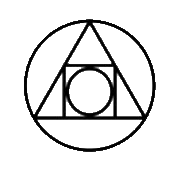
Vedic Astrology Readings & Jyotish Readings by Veno
Veno Astrology



Reading the Classics - Parashara Hora Shastra
by Veno
Sage Parashara is considered to be the grandfather of the present day Jyotish. Let's take a look at the opening sloka of PARASHARA HORA SHASTRA.
His work opens with obeisance to Lord Ganesha.
"I prostrate before the lotus feet of Lord Vighneswara, the offspring of Uma, the cause of destruction of sorrow, who is served by the Bhuta ganas etc, who has the face of a tusker and who consumes the essence of Kapitha and Jambu fruits"
Parashara refers to Ganesha here as Vigneswara (Vighne means obstacles) and eswara means (lord). This is the name for Lord Ganesha who removes all obstacles. Lord Ganesha is the presiding deity of Jyotish and is worshipped before all other gods and at the beginning of every activitiy. In Astrology Ganesha specifically relates to the two planets Jupiter (ruler of wisdom) and Ketu (ruler of discrimination and enlightenment). One should worship Ganesha regularly when practicing Jyotish in order to receive blessings and knowledge.
Ganesha is "gana" and "esh" which translates into the Lord of all beings, all groups, all divisions, including divisions of the sky, the horoscope etc. He is "the offspring of Uma" a name for goddess Parvati, Lord Shiva's consort. Uma refers to the mother principle.
Ganesh is "the destruction of sorrow". This is evident when one considers his connection to Jupiter ( a planet representing wisdom, light and righteousness) and Ketu ( a planet ruling discrimination, psychic power, enlightnement and detachment). These qualities must be awakened in the Jyotishi, practitioner of Jyotish.
Ganesh "is served by the Bhuta ganas" These are the five great elements of the universe under his control, air, water, fire, ether and earth which are present in all of nature and creation including the planetary bodies.
"who has the face of a tusker"
Ganesh's tusker form came about when his mother was bathing and he was supposed to guard her door to bar any visitors. Not recognising his father Shiva, Ganesha refused to let him enter the house. Shiva called upon the other gods for assistance and a great fight broke out in which Vishnu cut off Ganesh'a head. The enraged Parvati shook the universe threatening to destroy it. To pacify her Shiva went to find a new head for the child, which he took from the first being he saw, which was an elephant.
This story of Ganesh's birth carries many meanings relevant to the jyotishi. In one aspect it represents the kundalini (shakti's) journey along the body's spinal chakras towards enlightenment. Ganesha guards the door to the Muladhara chakra, the first point of shakti's journey along the spinal axis. Shiva represents the higher chakra, the crown chakra.
The lesson here is that enlightenment can't happen if the first chakra is not in harmony with the crown chakra allowing the kundalini to flow upwards. Ganesha was preventing Shakti from travelling to her true resting place. Therefore Ganesha had to be transformed. His elephant's head signifies completion of this upward journey.
Calling Ganesha a tusker focuses our attention on the importance of his tusk. Tusks are the most prized part of the elephant and signify royalty and leadership; the strongest and wisest of the tribe. They are also an instrument of penetration, mental insight, entering new fields of endeavour, sense of fearlessness and a go ahead spirit.
In astrology the tusk is a symbol of the constellation or nakshatra of Uttarashadha which represents spotless qualities. We can connect this to Ganesha's birth story which highlights the importance of renewal and regeneration. The Jyotish journey transforms and renews us by aiding spiritual awareness.
"who consumes the essence of Kapththa and Jambu fruits"
The tree of the Jambu/kapiththa fruit is referred to in ancient mythology as the "tree of life". It is seen as an extension of Lord Shiva who rules it. The tree's fruit produces soma - the nectar of immortality, which Ganesh has direct access to. Its trunk is supposed to be the sustaining axis of the world with its roots descending to Yama's underworld. It crowns Mt Meru and its tips are in heaven. The tree also casts a shadow on the moon, (the planet upon which the system of Jyotish is based). The tree is a symbol of the kundalini as it travels along the chakras, Mt Meru representing the centre of the spinal chord.